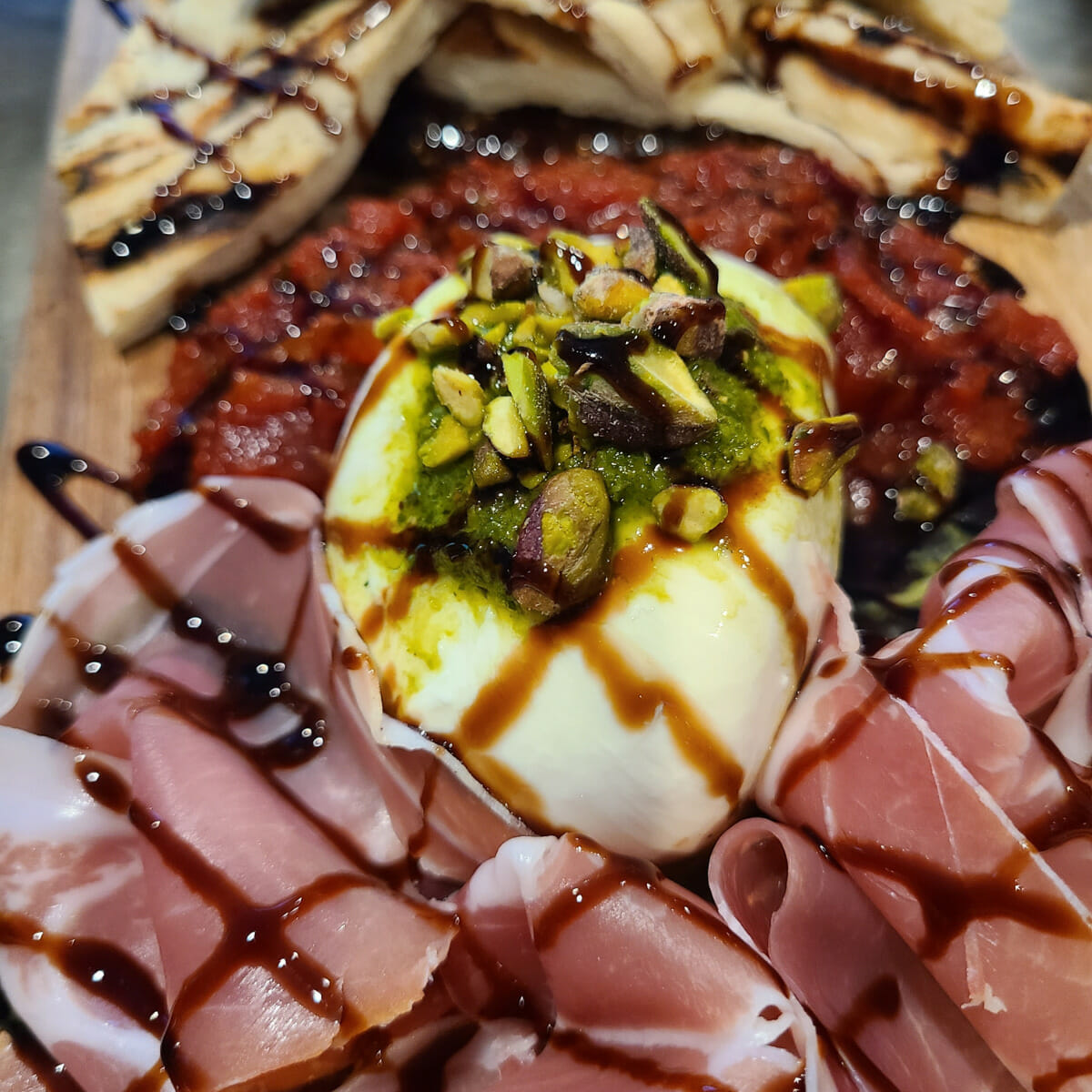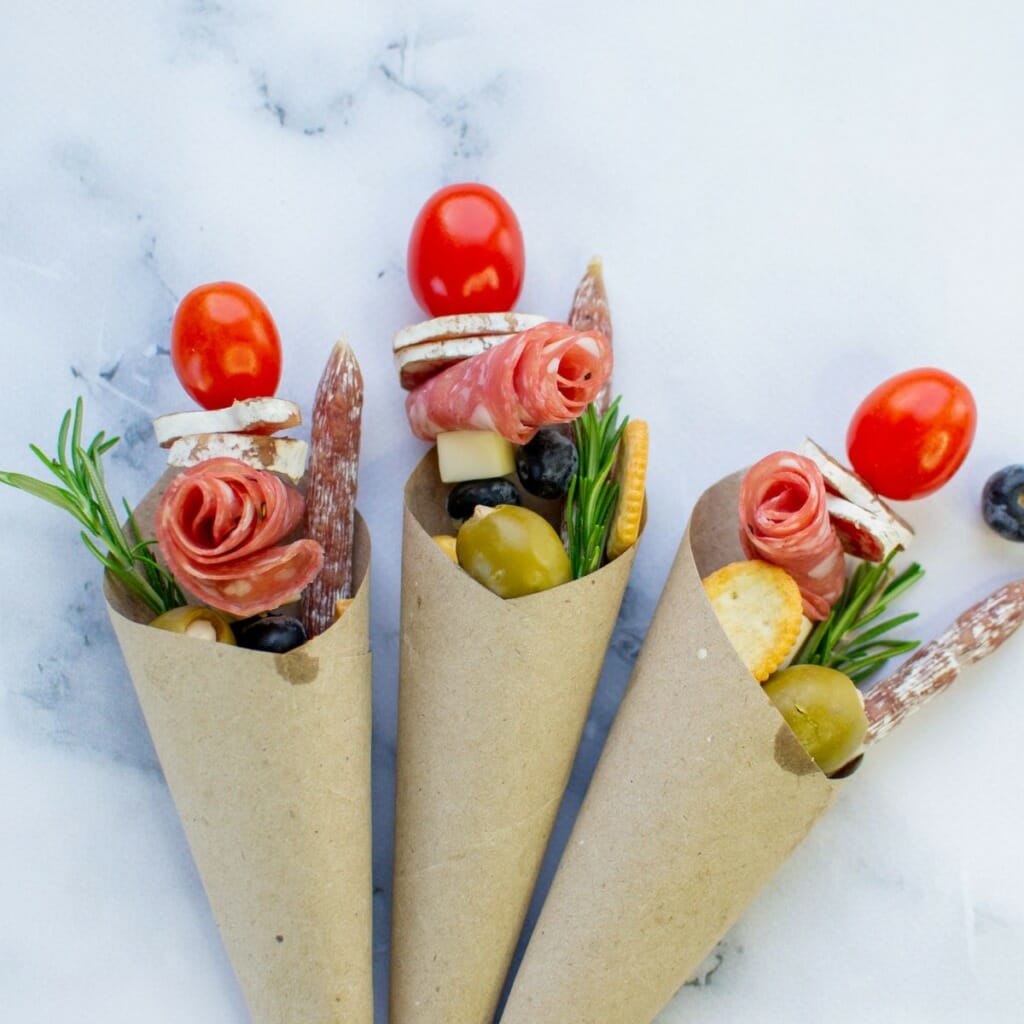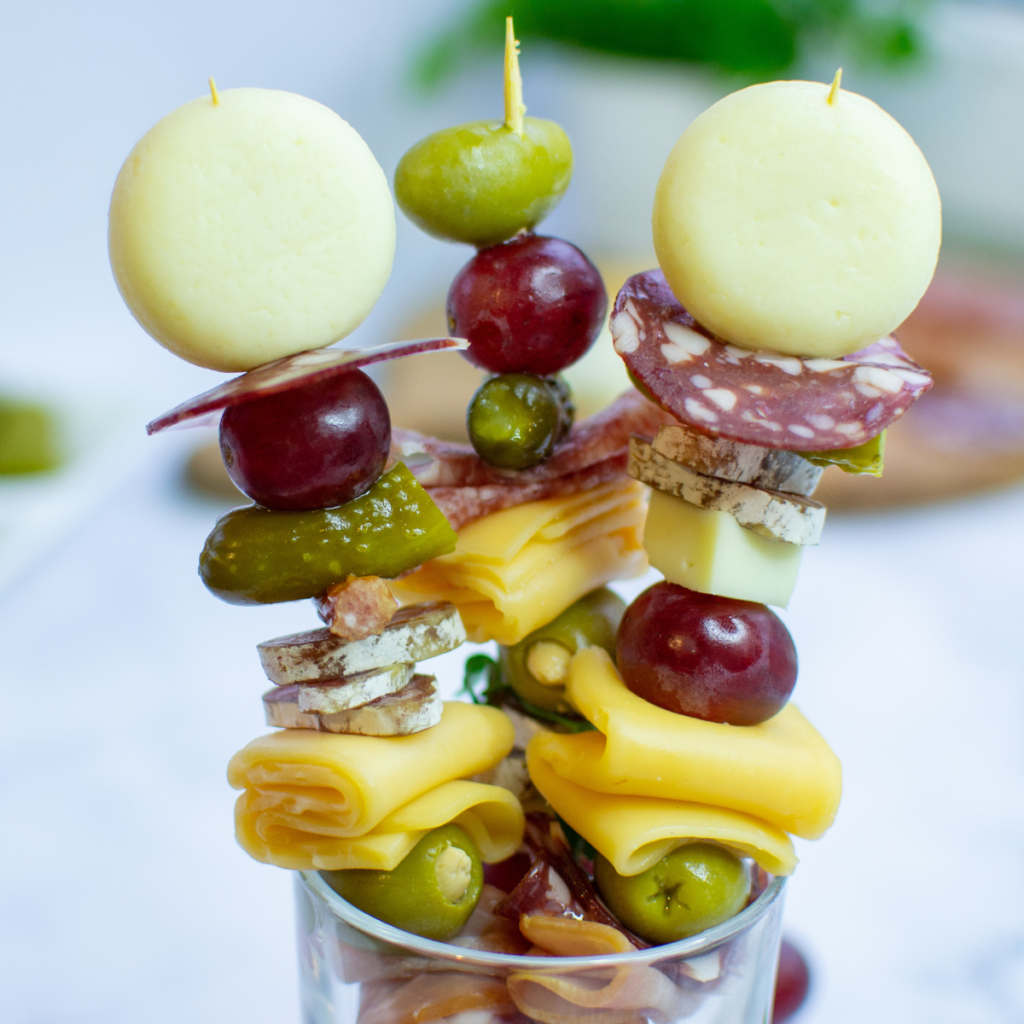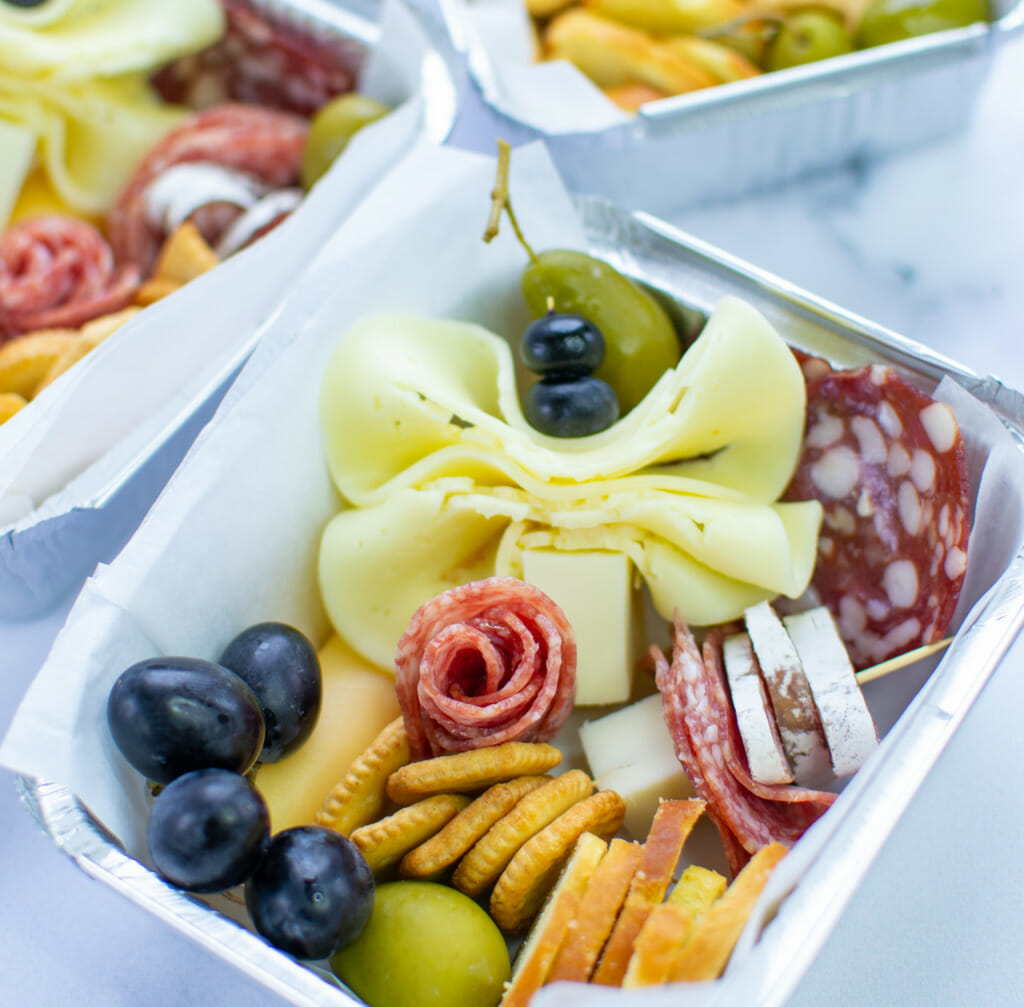What is charcuterie?
Charcuterie is the practice of making and putting together cured meats and other types of meat. Picking the best cheese for charcuterie can be tricky, as there are so many varieties out there.
Making the perfect charcuterie often involves a selection of meats served with things like toast, fruit, cheese, and sauces.
These boards are becoming more popular because – well, let’s face it – people like having something to snack on when they’re drinking and socializing. You can’t spend all day eating steaks, burgers and hot dogs!
It’s a great in-between meals snacks for everyone. And every time can be different!
The 6 best cheeses for charcuterie
Okay let’s get straight to the point, and we’ll explain why these cheese listed here make the top 6 list. Mainly these are chosen as the 6 best cheeses for your cheeseboard because they suit most people’s palates without being boring and plain.
1. Brie, Triple Creamed
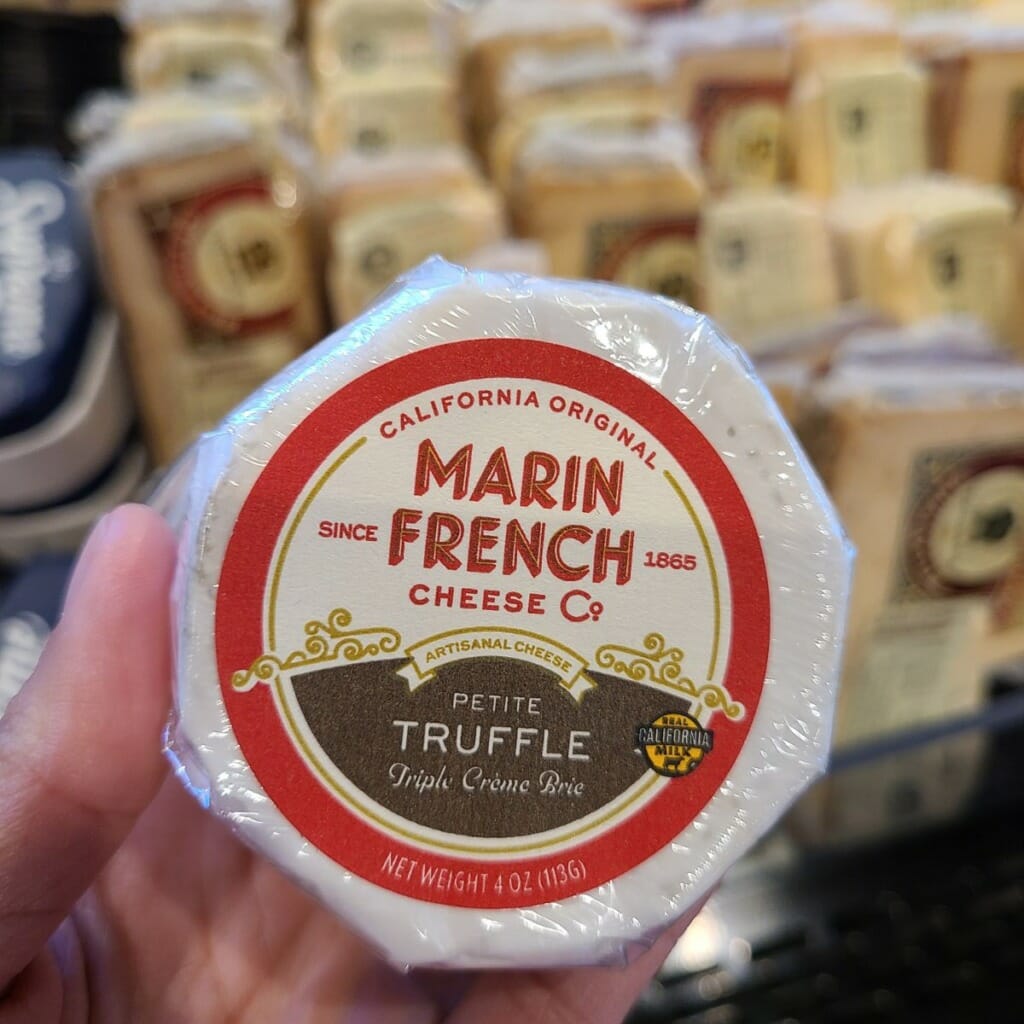
Brie especially the triple creamed one, is a great choice for charcuterie because it tastes buttery, creamy, and not very “foreign” to most palates. It also has a luxurious taste that goes well with things sweet jam and honey. Eating brie with honey is popular in France.
Brie can also be served with drinks like champagne, red wine, stout beer, or bourbon. A great deli meat pairing with brie is soppressata.
2. Gruyère
Gruyère is a popular Swiss cheese that tastes creamy and is pale yellow. It is made from cow’s milk and is cured for six months or longer. It has a slightly sweet, nutty flavor and a lot of saltiness.
Gruyère is good to eat with other cheeses, fruits, or biscuits. Its nutty aftertaste goes well with pecans or almonds.
3. Burrata
Burrata is a spectacle in and of itself. When used as a center piece on a small platter, it triggers that “OOooO what’s that?” look from your guests. At a restaurant, it definitely turns heads when the server bring out a burrata board!
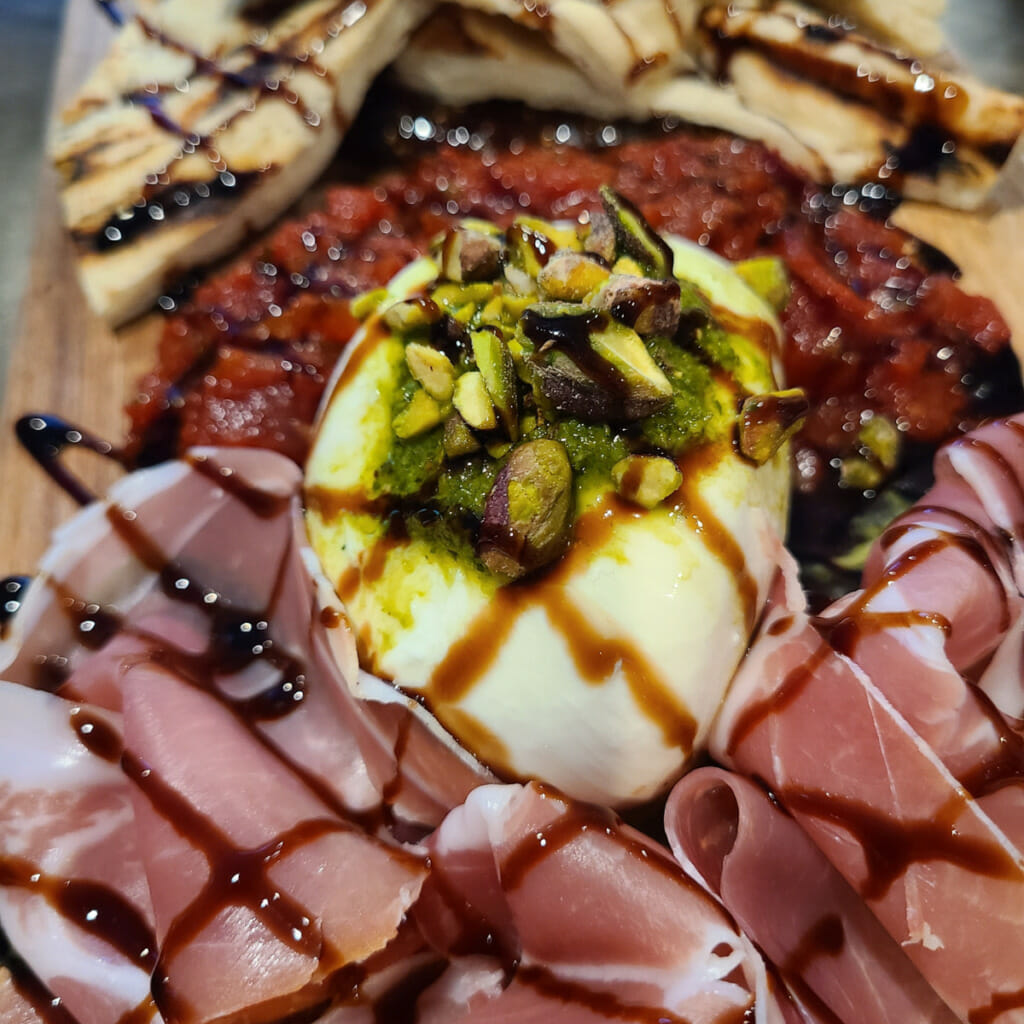
It is made from cow’s milk and has a mozzarella outer shell with small cheese curds and cream on the inside. Burrata is very rich and creamy and has a rather neutral taste, so it is perfect to eat with flavorful Italian meats like prosciutto, capicola, pancetta, and salami. Its softness also makes it easy to spread onto bread or crackers without breaking them. It’s very fun “breaking” into a burrata.
It’s soft, spreadable, and not messy (like blue cheese, feta, or ricotta – which is why they’re not on our top 6 list).
4. Aged Manchego – best pairing: jamon iberico
Aged Manchego is a good cheese for charcuterie because it has a complex and rich flavor. It has hints of nuttiness and sweetness. Aged Manchego also has a firm texture that does not fall apart when slicing or serving with charcuterie.
Since having a variety of textures is also important to a successful charcuterie cheese board, a firmer cheese definitely needs to be on the top 6 list. This is where manchego comes in. It’s slightly less common and offers a unique alternative to the widely familiar cheddar.
We’re not saying aged cheddar isn’t good here – it’s definitely a good idea to have a familiar cheese like cheddar on a charcuterie – but manchego is different and a little less boring!
5. Asiago
Asiago is a hard cheese that is only made in certain parts of Italy. It has a hard rind, a nutty aroma, and a strong, complex flavor when it is aged. Asiago is perfect for charcuterie because it adds extra flavor to the meats and can be used as an appetizer or served with other cheeses. Asiago also goes well with wine and beer, so guests can enjoy an enhanced dining experience.
6. Cheddar
Cheddar is a must-have for charcuterie because it is familiar to most people. Not everyone loves to experiment with food. Your less experimental friends will appreciate having something familiar and “normal”.
It has rich notes of tangy parmesan and nutty, sweet Swiss notes that make it perfect for pairing with other ingredients. If you’re feeling fancy, have aged cheddar by the pound, and thin slice them rather than buying them in those already-cut-up blocks. Stick to the 6-month or 1-year aged sharp cheddar for a more familiar taste, as the 2-year or extra sharp might be a bit too foreign for some of your guests.
The runner-up cheeses
Gouda
Gouda is a semi-hard yellow cheese from the Netherlands. It is sweet, creamy, and has a distinct flavor that can be both sharp and sweet. Gouda comes in many flavors, including smoked and truffle-flavored varieties. Aged gouda has an even more distinct flavor because of the cheese-making process of aging.
Goat Cheese

Goat cheese is a runner-up cheese because it can be young or mature, mild or tangy, and crumbly or creamy. It works well with bread, biscuits, and fruit combinations. I would not have it by itself, but a compliment to other cheeses.
Parmesan
Parmesan is a runner-up cheese because it is very pungent and typically only served as a topping on pasta or bread dips. If you’re going to have any kind of bread on your charcuterie it might be a great idea to have dips, sauces, or spreads. What better way to serve bread than a little olive oil and parmesan dip!
What to consider when choosing cheese for a charcuterie platter?
Quality
It is important to choose high-quality cheese for a charcuterie board your board might sit out for a while – the less quality cheeses won’t last as long and it will be noticeable. Look for cheese that is known for being high-quality and avoid any cheese that tastes fake or processed. Generally buying cheese sold by the pound rather than by the package would do the trick.
Variety
Variety makes a charcuterie board so much more fun! Choose some salty, some sweet, some nutty, some hard, and some soft cheeses. If you’re feeling fancy choose herbed varieties, and very aged varieties. Here’s a great chance to try something new and different as well!
Do not put too many different types of cheese on the platter because it will be hard for people to know what to eat with what. I would stick to about 3 to 5 different varieties, depending on how large your board is.
Taste
When you choose cheese for a charcuterie platter, think about what it tastes like and what type of milk it is made from. For example, you could choose cheese made from cow’s milk, goat’s milk, or sheep’s milk. It is also a good idea to have one familiar cheese (like Cheddar or Parmesan) on the board for people who are not used to trying different types of cheese.
Texture
Texture is also a fun way to explore food. Include a variety of cheese that are soft, semi-hard, and hard. Burrata, brie, and manchego makes a great combo! If there’s room add a crumbly variety such as blue cheese or goat cheese.
Composition
What is the rest of your cheese board look like? Here is a great place to add local or seasonal ingredients like herbs or nuts to add extra flavor and texture to the platter. After you’ve placed your large items such as cheese and crackers and fruits on the board, fill in the remaining spaces with thing such as candied nuts, roasted nuts, seeds, or even granola!
If you have a small gathering of intimate friends, you can add things like drizzles, sauces, jams, and spreads. It is better for a small gathering rather than a large party because they tend to get a little messy. Put in a small bowl or drizzle it on top!
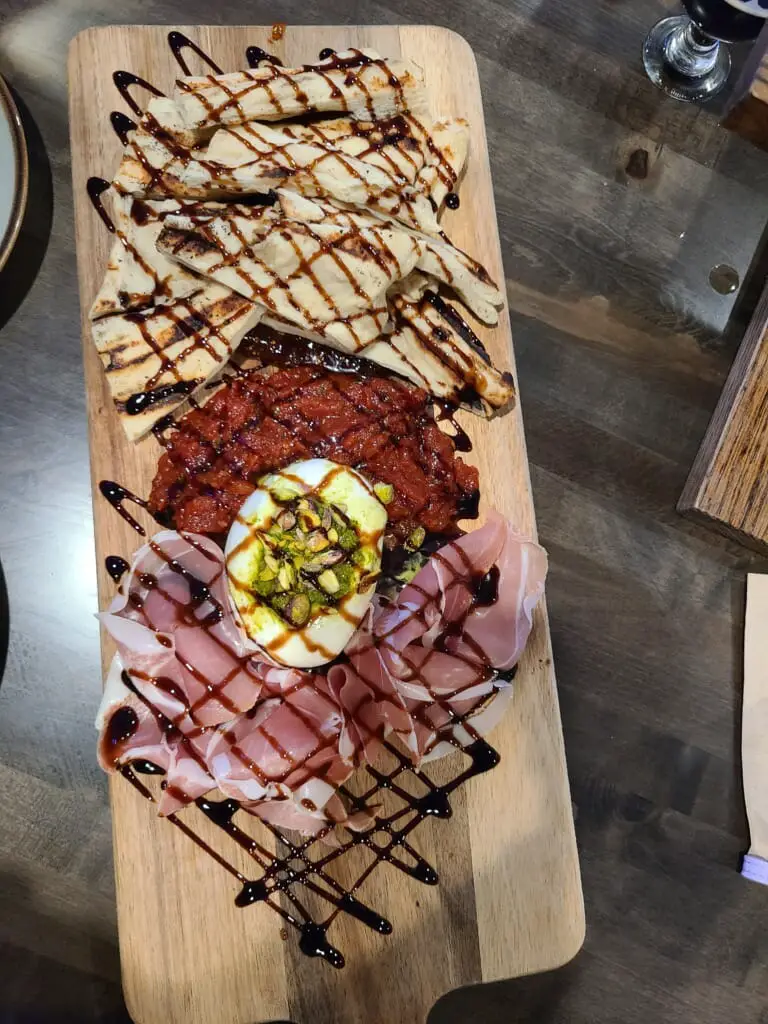
Top tips for the best cheese board
Highlight your local farms
Highlighting local farms can help make your cheese board more memorable by providing an opportunity to learn about the region’s cheeses and their origins. By selecting cheeses from different regions around the country, you can learn more about each area’s unique flavors and pairings.
By including at least one well-known cheese, such as sharp cheddar, you can also share fun facts with your guests. Additionally, everyone in your party will love supporting local farms.
If you don’t have a charcuterie where there’s room to write and label the cheeses, just use a toothpick, a piece of paper, and some scotch tape to label them!
Consider dietary restrictions
Some of your guests might be lactose intolerant, or downright vegan. If you aren’t sure, I would definitely include something like goat cheese, or vegan cheese.
FAQ
What are the flavors and textures of different cheeses?
Fresh cheeses tend to be mild in flavor and soft in texture. As they age, they become more punchy (in flavor) and firmer (in texture).
Super-aged goudas can have a crumbly texture that is almost like chalk.
Époisses wheels are runny and have a rich, buttery taste.
Bries can be creamy or semi-hard with fruity flavors.
Blue cheeses can range from soft to crumbly depending on the variety, with strong flavors that range from mild to intense.
What type of accompaniments should I include on my charcuterie board?
On your charcuterie board, you should include meats, cheeses, savory accompaniments, sweet accompaniments and crackers.
Examples of meats include prosciutto, salami, ham and cured chorizo. However, if you’re looking for alternatives that cater to different dietary needs, consider incorporating pork-free charcuterie options such as beef bresaola or turkey salami. This ensures everyone at your gathering can enjoy the delicious spread, regardless of their dietary preferences.
Savory accompaniments can be candied nuts such as candied pecans, roasted nuts such as pistachio nuts, or things like macadamia, almonds, etc. I’ve also had success including granola, and pumpkin seeds!

Small fruits such as blueberries, raspberries and pomegranate seeds add a pop of color to your board and a very welcomed addition to a charcuterie. Try half sliced cherry tomatoes, or quarter sliced strawberries for a nice red pop of color!
Crackers or bread is obviously a must-have here. Try including both crunchy and buttery varieties. Rice crackers might be a welcoming choice for your gluten-free guests. Pita can also be a great choice here.
Dips, spreads, jams, drizzles, and sauces are a great idea to have. However, they tend to be a bit messy so it’s better for a small intimate party of 2 to 4, rather than a large party.
I’ve seen cheese boards with jams put directly onto the board, but you can also put it on a small white ceramic bowl either directly on the board or on a side. I’ve seen it done both ways with great success. I really would avoid it, though, if you’re having a large party.
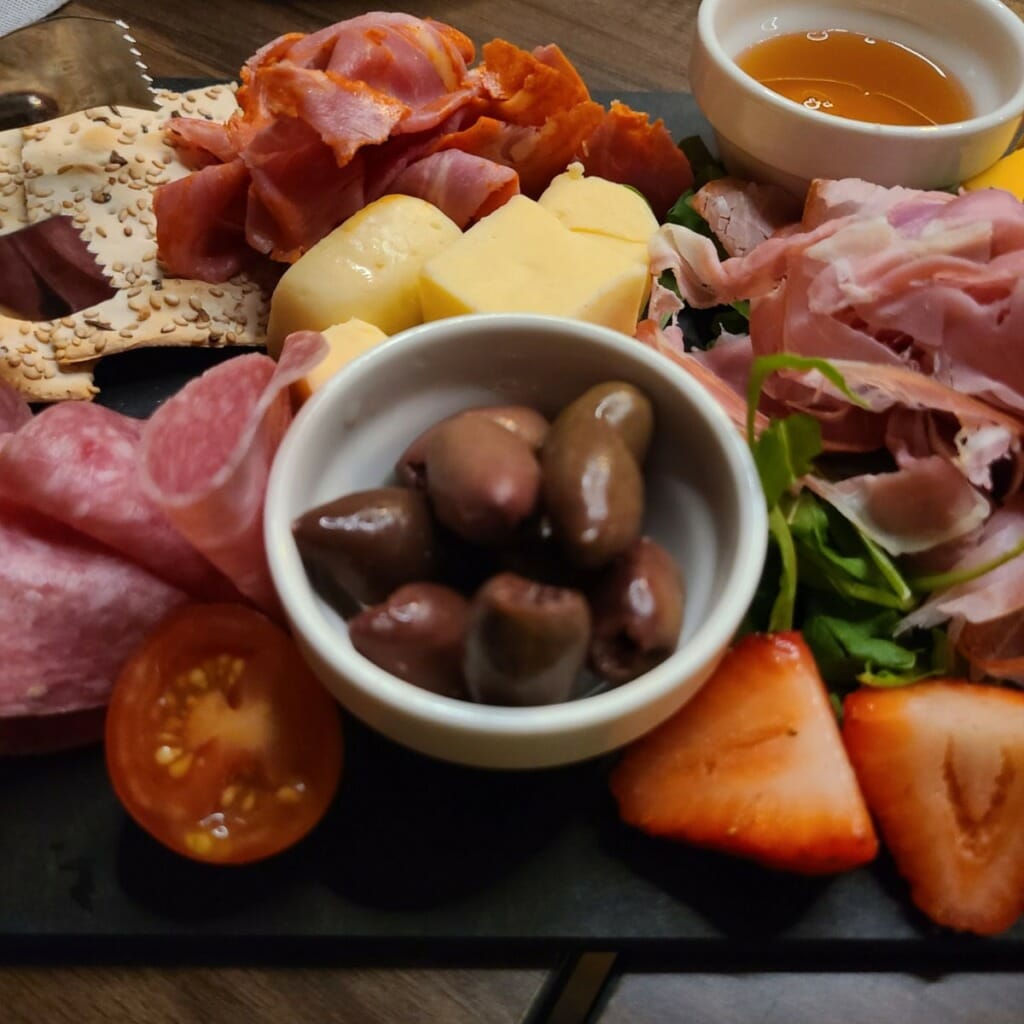
What wines pair best with cheese?
When pairing wine and cheese, it is important to consider the strength and complexity of both items. For example, you should avoid pairing a full-bodied wine with a too-delicate cheese and vice versa. Additionally, different types of wines can be paired well with various types of cheeses depending on their sweetness, dryness or acidity.
To ensure successful pairings, it is important to understand the strengths and flavors of each item as well as their compatibility with one another. For example, some wines are aged in oak which can clash with soft cheeses like brie or fresh mozzarella.
4 steps to a perfect cheese board:
Step 1. Start with the large items, and a centerpiece if you have one (such as a large wheel of cheese or burrata) in the middle.
Step 2. Add crackers, pita, or bread and other larger items next. If you’re putting jam or spreads on the board, do that now.
Step 3. Fill in the board with smaller items such as small fruits and olives.
Step 4: Fill in the rest of the board with seeds, nuts, or granola.
If you’re ever in the area, this burrata cheeseboard is at Prime 88 Steak House in Spring Hills, Florida. Photo taken November 2022.

